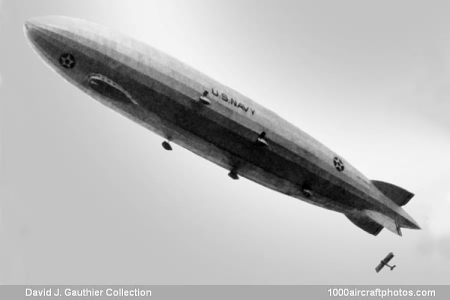11/30/2011. To speed up its rigid airship program, the USN decided to buy a new rigid, to be designated ZR-2, which was then under construction in England as the R.38. In addition, the Navy was to receive two war-time German Zeppelins as war reparations. None of these ships was received; the R.38 broke up on a trial flight before being handed over to the Navy and the Zeppelins were sabotaged in their sheds by their German crews.
As a result, the Inter-Allied reparations commission agreed that the Zeppelin company should build a single modern replacement airship for the USN. This proved to be the salvation of the company, for even though it had built two purely commercial ships right after the war, they had been confiscated by the Allies and pressure was being applied to break up the company and scatter its technicians.
The LZ 126, to cite its factory designation, was built essentially as a commercial design since, as war reparations, it was not to be offensive military or naval equipment. Although the US intended to operate it with helium, the LZ 126 ZR-3, later to be named USS Los Angeles, was inflated with hydrogen for its makers' tests and the 5,060 mls (8,143 km) delivery flight from Friedrichshafen to Lakehurst, which was made during October 12-14, 1924.
The ZR-3 made 331 flights and accumulated 5,368 flight hours prior to retirement in June 1932. Among the more interesting experiments conducted were those involving the hook-on operation of aeroplanes. Following the loss of the ZRS-4 USS Akron, the ZR-3 was recommissioned but saw limited use. It was finally scrapped in 1939. Power plant, five 400 hp Maybach; length, 658 ft (200.56 m); diameter, 90 ft 6 in (27.58 m); volume, 2,472,027 cu.ft (70,000 cu.m); max speed, 76 mph (122 kmh).
